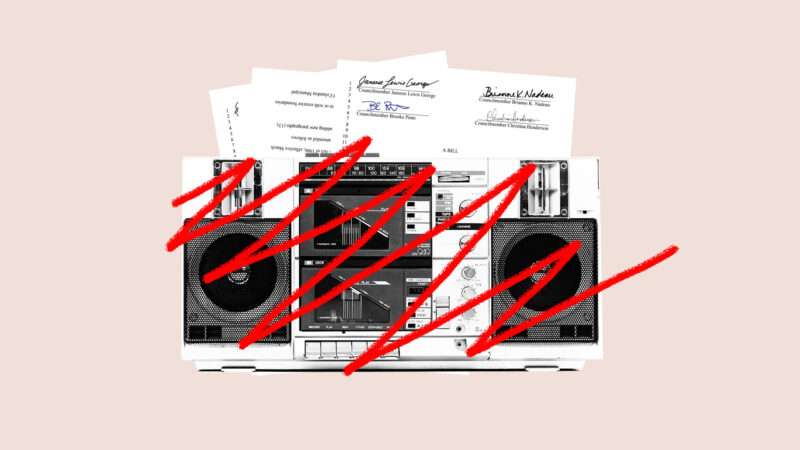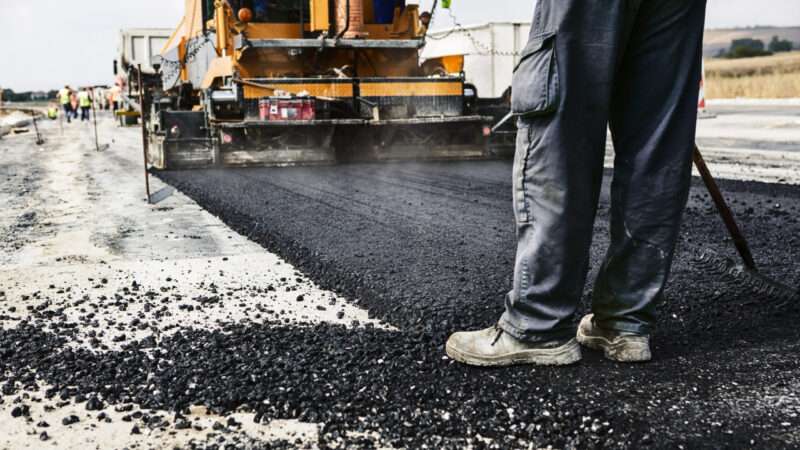
On Tuesday night, The New York Times alleged that Rep. Matt Gaetz (R–Fla.) is “under investigation over possible sex trafficking” of a minor. Gaetz has denied the allegations and spun some accusations of his own, involving a former federal prosecutor attempting to extort his family.
According to “three people briefed on the matter,” Gaetz “is being investigated by the Justice Department over whether he had a sexual relationship with a 17-year-old and paid for her to travel with him,” the Times reported. “Investigators are examining whether Mr. Gaetz violated federal sex trafficking laws, the people said.”
The Times doesn’t go into any more specifics about Gaetz’s alleged relationship or how the activity described constitutes sex trafficking. But on Fox News last night, Gaetz denied traveling with a 17-year-old (“people can look at my travel records and see that that is verifiably not the case,” he told Tucker Carlson) or having a relationship with a 17-year-old (“that’s totally false,” Gaetz said).
Gaetz went on to say that he was being extorted by people demanding $25 million from his dad “in exchange for making horrible sex trafficking allegations against me go away.”
For more than a decade, sex trafficking has occupied a central place in modern crime panic and fears for child safety. To many, it conjures images of abduction, smuggling across borders, confinement, and physical violence. As a legal matter, it needn’t actually involve any of these things. No matter which version we go by, however, it’s hard to see how the conduct alleged in this case—while morally suspect and quite possibly a violation of some criminal laws—qualifies.
The federal prohibition on sex trafficking (18 U.S. Code § 1591) specifically relates to commercial sex—a.k.a. prostitution—involving force, fraud, or coercion and/or people under age 18. Passed in 2000 and expanded every few years since, it implicates anyone who “recruits, entices, harbors, transports, provides, obtains, advertises, maintains, patronizes, or solicits by any means a person” knowing that force, threats of force, fraud, or coercion “will be used to cause the person to engage in a commercial sex act, or that the person has not attained the age of 18 years and will be caused to engage in a commercial sex act.” Commercial sex act is defined under federal law as “any sex act, on account of which anything of value is given to or received by any person.”
Some have argued that if Gaetz paid for someone he was having sex with to travel with him, this constitutes commercial sex. But the key thing when it comes to “commercial sex acts”—whether we’re talking about activity between consenting adults or activity that would qualify as criminal sex trafficking—is that any payment must be in exchange for sex. The payment needn’t be a direct monetary exchange, but it must be quid pro quo.
If two adults go on a trip together, one of them pays for the plane tickets and hotel room, and the pair winds up having sex, that is not considered commercial sex. Nor is it commercial sex if someone buys a date dinner or some sort of gift and later that night the pair hooks up. And, obviously, if an adult pays for a 17-year-old to travel with them and no sexual activity takes place, that is not commercial sex, either.
But what about the activity alleged here: an adult paying for a 17-year-old to travel with him and also engaging in a sexual relationship with her?
That certainly could run afoul of a number of criminal laws. However, prosecution for child sex trafficking seems unlikely unless it could be proved that paying for the girl’s travel was explicitly conditioned on her engaging in sexual activity, or that money or something else of value was specifically promised in return for these sex acts.
Saying that what Gaetz is accused of isn’t child sex trafficking doesn’t mean it’s perfectly fine behavior for a member of Congress or that it shouldn’t be condemned. But our modern tendency to describe any and all morally suspect and/or criminalized sexual activity as sex trafficking leads us not to moral righteousness but moral panic.
It’s how we get masses of people believing insane conspiracy theories like those spread by QAnon, in which the highest levels of government and business are supposedly controlled by child sex traffickers who harvest kids’ blood. It’s how we get oodles of nonsensical Facebook memes about traffickers trailing people around supermarkets. It’s how we end up with dangerous laws like the 2018 Fight Online Sex Trafficking Act (FOSTA), which criminalizes online speech surrounding consensual sex and makes it more difficult for workers in commercial sex sectors to stay safe. And it’s how we end up with ever more police, FBI, and ICE stings targeting all forms of sex work, which ruin lives and drive up arrests and incarceration without actually protecting anyone.
None of this is to say that a man who is in his thirties “dating” a teenager is something to be condoned. Most people can probably agree that it is, at the very least, creepy. Many people would agree that it crosses a moral line. And depending on where the relationship took place, it could also violate a number of criminal laws.
In D.C., the age of sexual consent is 16 (meaning a sexual relationship between an adult man and a 17-year-old girl would be legal). But the age of sexual consent in many states (including Florida) is age 18, so an adult having sex with a 17-year-old in these places would be guilty of statutory rape (a state-level crime). And if state, country, or territorial lines were crossed, prosecution under a federal law known as the Mann Act is also possible.
The Mann Act of 1910—which is distinct from the federal prohibition on sex trafficking passed this century—prohibits bringing anyone, including adults, across state lines “with intent that such individual engage in prostitution, or in any sexual activity for which any person can be charged with a criminal offense.”
This law—which once banned helping someone cross state lines for any “debauchery” or “immoral purposes”—has a dark history of being used against interracial couples, LGBTQ people, immigrants, immodest women, and others whom authorities considered de facto suspect. It also became a catchall tool to justify federal police surveillance and action. Today, it is still used in cases where no force, fraud, coercion, or minors are involved and can be levied against adult sex workers who travel in pairs or aid each other with travel plans.
In addition to crossing borders for prostitution purposes, the Mann Act also bans an array of other acts, some involving minors and some not. One section bans the transportation of minors across state lines “with intent that the individual engage in prostitution, or in any sexual activity for which any person can be charged with a criminal offense.” If the Times report on Gaetz’s relationship and activities is true, it’s this part that seems like the most applicable federal statute (provided the age of consent in any of the areas traveled to was above 17). It’s perhaps the only applicable federal statute unless the feds want to argue that paying for the travel constitutes engaging in a commercial sex act.
The New York Times does not say what statutes Gaetz is allegedly suspected of violating, but it does report that it “is part of a broader investigation into a political ally of his, a local official in Florida named Joel Greenberg, who was indicted last summer on an array of charges.”
Where this investigation—and Gaetz’s counterclaims—will ultimately lead is anyone’s guess. But for now, it seems like prime example of how sex trafficking allegations have become a catchall to capture all sorts of perceived sexual misconduct.
from Latest – Reason.com https://ift.tt/39vRGCE
via IFTTT



